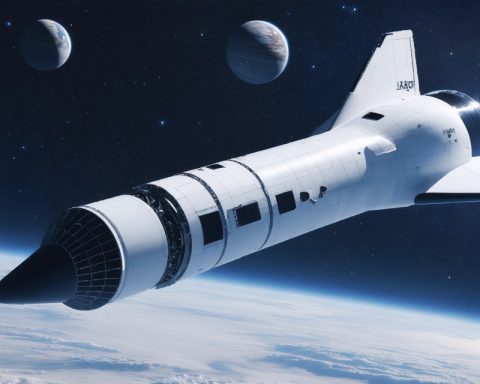A Breakthrough in Satellite Technology
Recently, the innovative LignoSat made headlines as the first wooden satellite ever launched into orbit. Weighing in at 900 grams and measuring just four inches on each side, this remarkable CubeSat has ventured 400 kilometers above the Earth’s surface.
A Unique Construction
LignoSat, a collaborative project of Kyoto University and Sumitomo Forestry, is crafted from honoki magnolia wood panels, each ten centimeters long. The assembly technique draws upon traditional Japanese wood joinery, famously eliminating the need for screws or adhesives.
Pioneering Research in Orbit
With a mission slated for six months, LignoSat will delve into the potential of using wood as a sustainable alternative to common satellite materials like aluminum and titanium. This groundbreaking research aims to shed light on how wood performs under the harsh conditions of space.
Analyzing Environmental Impact
Equipped with advanced sensors, the satellite will monitor the effects of temperature fluctuations and radiation on the wooden structure as it experiences extreme temperatures ranging from -100 to 100 degrees Celsius. These findings could greatly contribute to the future of sustainable satellite design, offering insights that may transform our approach to space exploration. LignoSat stands at the forefront of a new era, questioning the conventional materials and methods used in satellite technology.
Revolutionizing Space: The Future of Wooden Satellites
A Breakthrough in Satellite Technology
The launch of LignoSat, the first wooden satellite, marks a significant milestone in space technology. Designed by Kyoto University in collaboration with Sumitomo Forestry, LignoSat is a CubeSat that weighs only 900 grams and measures a compact four inches on each side. This pioneering satellite has been successfully deployed into orbit, 400 kilometers above the Earth’s surface, paving the way for innovative materials in aerospace engineering.
Specifications of LignoSat
– Material: Made from honoki magnolia wood.
– Size: Each panel is 10 centimeters long; total dimensions are 4 inches cubed.
– Weight: 900 grams.
– Mission Duration: Planned for six months.
– Orbit Altitude: Approximately 400 kilometers.
This launch challenges preconceived notions about the materials traditionally used in satellite construction, such as aluminum and titanium.
Innovative Construction Technique
LignoSat employs a unique assembly method based on traditional Japanese wood joinery, which notably eliminates the need for screws or adhesives. This innovative approach not only enhances the sustainability aspect but also highlights the intersection of culture and technology.
Pioneering Research Aims
The core objective of LignoSat’s mission is to investigate the potential of wood as a sustainable alternative in satellite technology. With a mission duration planned for six months, the satellite will collect critical data regarding the performance of wood in the harsh environment of space.
Environmental Monitoring Capabilities
Equipped with advanced sensors, LignoSat is set to monitor various environmental factors, including:
– Temperature Fluctuations: Ranging from -100 to 100 degrees Celsius.
– Radiation Exposure: Analyzing how the wood reacts to space’s intense radiation levels.
These observations could provide invaluable insights into how alternative materials like wood can withstand extreme conditions, thus informing future sustainable practices in satellite design.
Pros and Cons of Using Wood in Satellites
Pros:
– Sustainability: Wood is a renewable resource, potentially reducing the carbon footprint of satellite manufacturing.
– Cultural Heritage: Incorporating traditional Japanese techniques demonstrates a fusion of culture and modern technology.
Cons:
– Durability Concerns: Wood may not match the durability of metals in the extreme conditions of space.
– Limited Historical Data: There’s a lack of long-term data on wood’s performance in space environments.
Market Insights and Future Trends
As space exploration continues to expand, the need for sustainable practices becomes increasingly apparent. Innovations like LignoSat set a precedent for the use of biodegradable materials in aerospace technology, aligning with global sustainability goals.
Security Considerations
The integration of natural materials in satellite technology raises questions about long-term security and reliability. Continuous monitoring of LignoSat’s performance will be essential to address potential vulnerabilities associated with wooden structures in space.
Conclusion: A New Era in Satellite Design
LignoSat stands at the forefront of an exciting new chapter in satellite technology, where traditional materials and innovative construction techniques converge. This groundbreaking research not only challenges conventional methods but also has the potential to redefine the future of space exploration in a more sustainable way.
For more information about advancements in satellite technology, visit Kyoto University.














